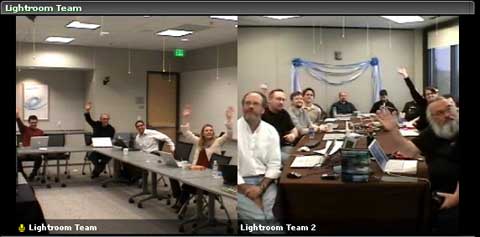Mark Hamburg
I’ve covered much of this in some of George Jardine’s Lightroom podcasts, but I decided it was worth writing something down for more general consumption and reference.
The Lightroom (née Shadowland) project had at its core the following goals. Some of them existed from the start. Others evolved as we went along. Interestingly, none of them are about photography. Photography proved, however, a good space in which to explore them.
Personality as a conscious part of software design
All products have a personality of one sort or another. That personality is at the heart of how the product works, what it feels like to use, etc. Sometimes that personality is relatively muted and/or buried behind other conventions. Sometimes it is directly in one’s face. Very often it is something that happens more or less by accident, but that accidental nature doesn’t mean that it doesn’t exist.
One of the goals in Lightroom was to consciously think about the product personality we were trying to create with the expectation that a less accidental personality would induce a stronger emotional reaction in users. That stronger reaction can be both positive and negative. We knew that going in. The second part of this goal was to have enough passionate users to outweigh the detractors.
Elegance, Grace, and Style
We wanted Lightroom to seem elegant. To exhibit grace. To show an attention to style beyond the utilitarian aspect that dominated Adobe’s products up to that time. We wanted a richer UI experience.
We’ve been successful in many ways. At the same time, we are painfully aware that there are places where we could be yet more graceful or elegant.
Style is one of the key factors in revealing personality, and as with personality in general, a rich experience will appeal to some and alienate others. Given the number of Lightroom emulations, I see popping up, there’s evidently something appealing about the choices we’ve made.
Maximizing Power v Complexity
While traditional professional applications like Photoshop generally make some effort at coherency in their interfaces, they also tend to be completely ready to add complexity if that will lead to more power. On the other hand, consumer applications frequently throw out power to arrive at simplicity.
On Lightroom, we sought to maximize the power to complexity ratio. If a small bit of additional complexity opened up a lot more power for users, we would go for it. On the other hand, if the complexity was high and the increase in power was low, we would avoid it.
Have we always struck the right balance? No. There are places in the application where the feature set is more complex than the power it delivers merits. Sometimes this happened because we were seeking compatibility with other software. Sometimes this happened because we didn’t come up with an appropriately simple idea. As a demonstration, however, that power need not be complex and that relatively simple software need not be weak, I think Lightroom has generally been a success.
These goals will continue to guide us and photography continues to provide a good space in which to explore them.


